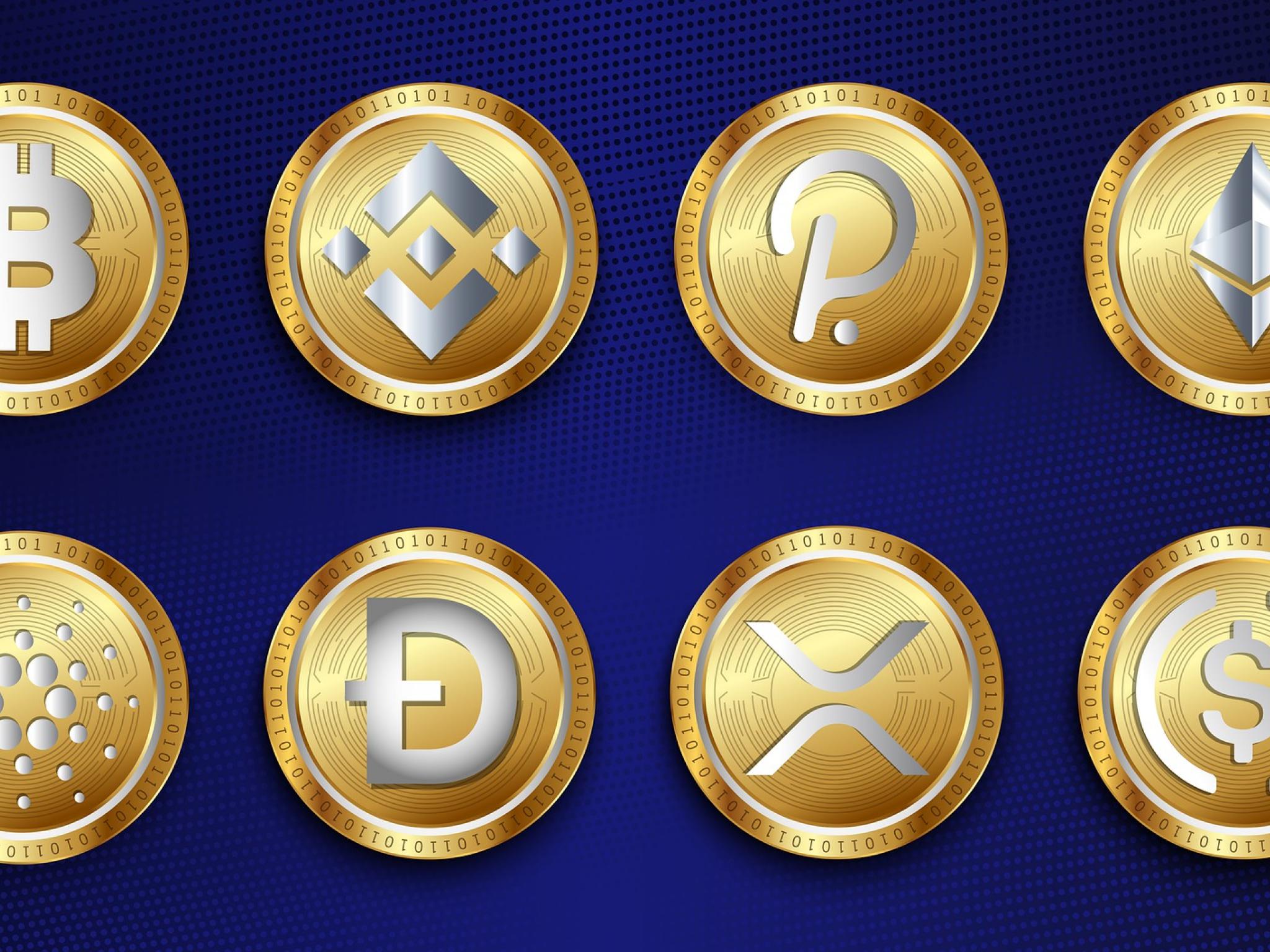
Welcome to part one of a three-part series.
My argument for stocks is simple. Being a good stock investor will make you a better crypto and commodity investor. Here's why.
As investors, it is not about which market is better than the other. It is about understanding and identifying which market offers the best high-probability opportunities to grow your hard-earned money.
The reality is that as good investors, you want to keep an eye on all the major markets, including U.K. and U.S. stocks, commodities, currencies/forex and cryptos. They all offer lucrative opportunities when the time is right.
And that's the key; timing a market is essential. As much as you do not want to dismiss a market due to a lack of understanding, you equally do not want to have unhealthy attachments to one. All markets offer excellent wealth-building opportunities, and you as an investor want to be positioned to take advantage of all of them.
You don't want to label yourself as a crypto trader or a commodities trader, but simply an investor.
What does this mean?
As investors, all markets must be treated equally and then, through a proven analysis process, determine where the best opportunities lie.
Let's start with cryptos.
The crypto space is the newest of all the financial markets, which means it is still maturing. Whatever your views are, it is a market that's here to stay. Blockchain is the future, so you don't want to dismiss it, particularly when you start understanding the utility of some of these projects or the blockchain called IDOs. There is incredible innovation going on and some excellent low cap gems to invest in as seed investors that deliver mindboggling returns. It is a space that is creating millionaires overnight.
How much of this is down to luck when we know financial literacy is a global pandemic that gets very little mainstream media attention? As investors, we must eliminate chance and instead understand how to manage probabilities. The crypto space has extreme volatility, and the cycles between boom to bust are relatively short.
Let's compare Bitcoin with the S&P 500 to highlight this.
From March 2020, following the recovery from COVID-19, to the current all-time high of November 2021, Bitcoin rallied by 1,580%. The S&P 500 rallied by 120%. The decline at the start of this year on Bitcoin was 52% compared to 15% on the S&P 500. Based on these massive differences in price movement, nothing less than a sophisticated approach is required.
Below is the monthly time frame for Bitcoin.
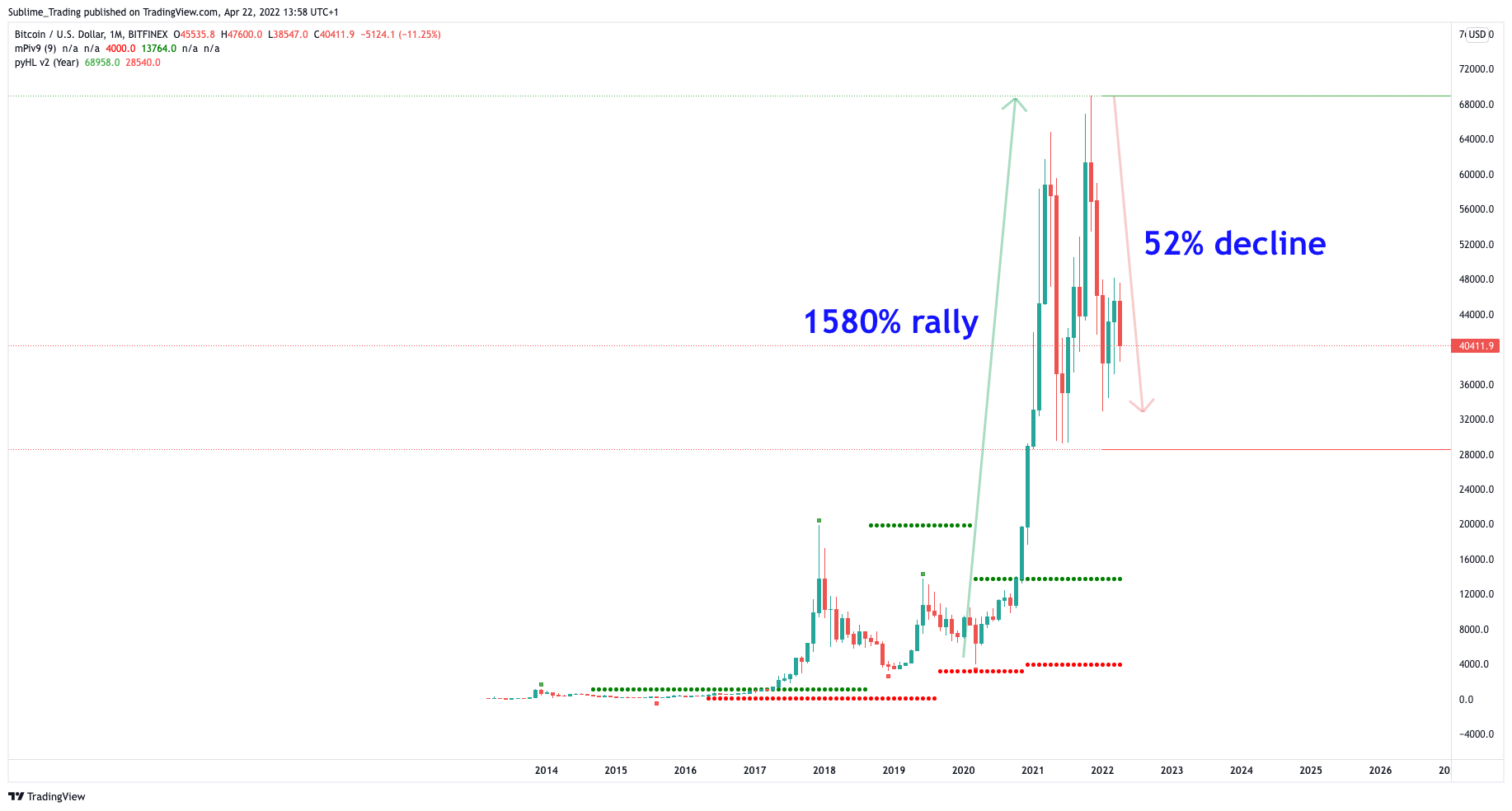
Below is the monthly time frame for the S&P 500.
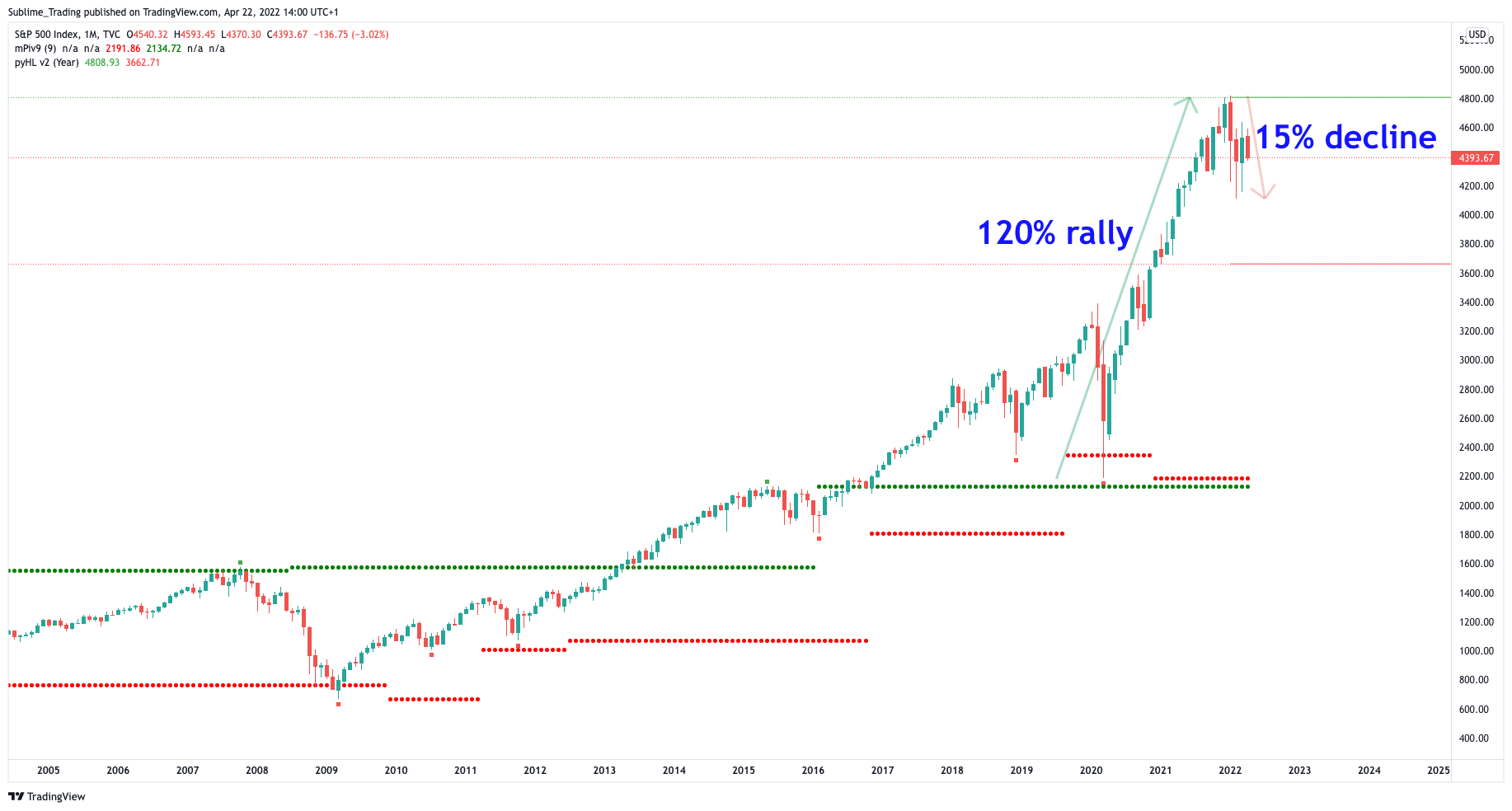
Now, let's have a look at commodities.
The commodities market is very mature. It has been around since the dawn of the financial markets. Gold, silver, oil, precious metals, wheat and copper, to name a few, can all be traded for lucrative sums of money. It has created billionaires — people like John W. Henry.
At the same time, it is an extremely slow market and not one you want to focus on solely.
For example, gold has been in an 11-year range from 2011 until today. Below is the monthly time frame.
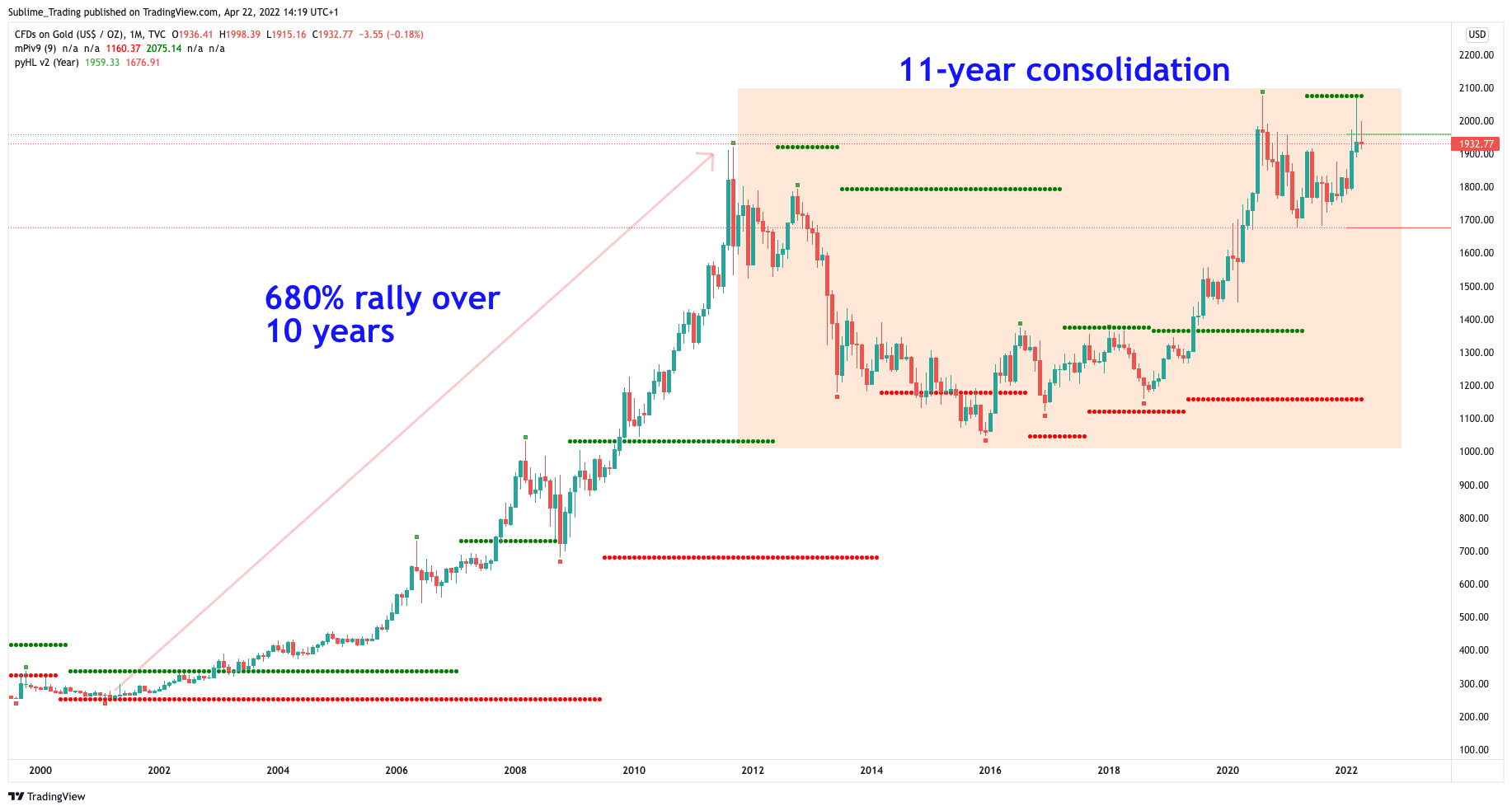
Oil had been in a range since the low of 2016. It took the invasion of Ukraine to see the price move past $100 for the first time since 2014. Prior, it was only the bear market in 2014/2015 when the price fell from $100 to $25 when it was last worth shorting, which I did. Below is the monthly time frame.
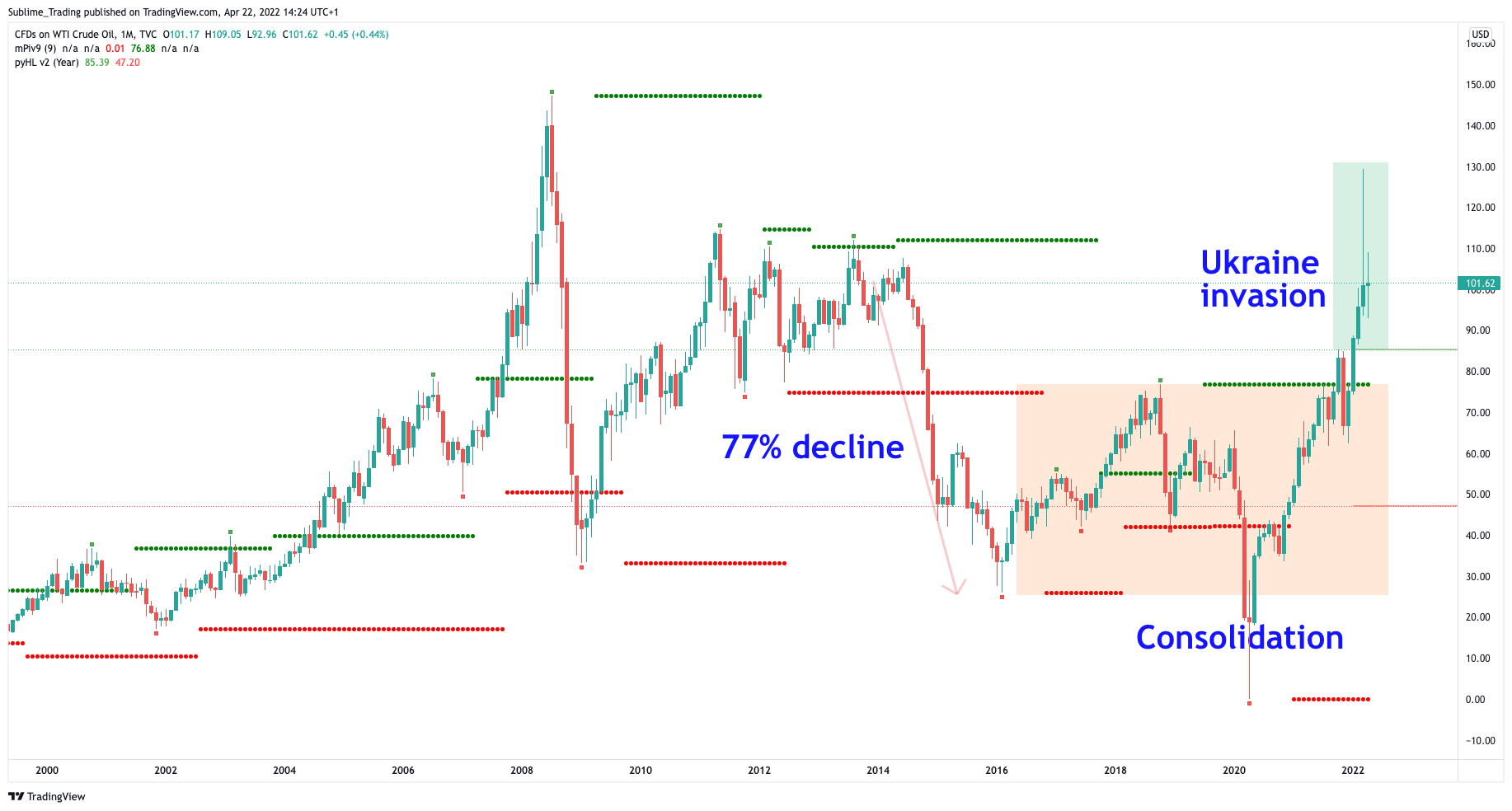
Copper had trended for a year from April 2020 to April 2021 but has since been in an area of consolidation, also a year. The price is not showing signs of breaking out, although there was a fake breakout last month. Below is the monthly time frame.
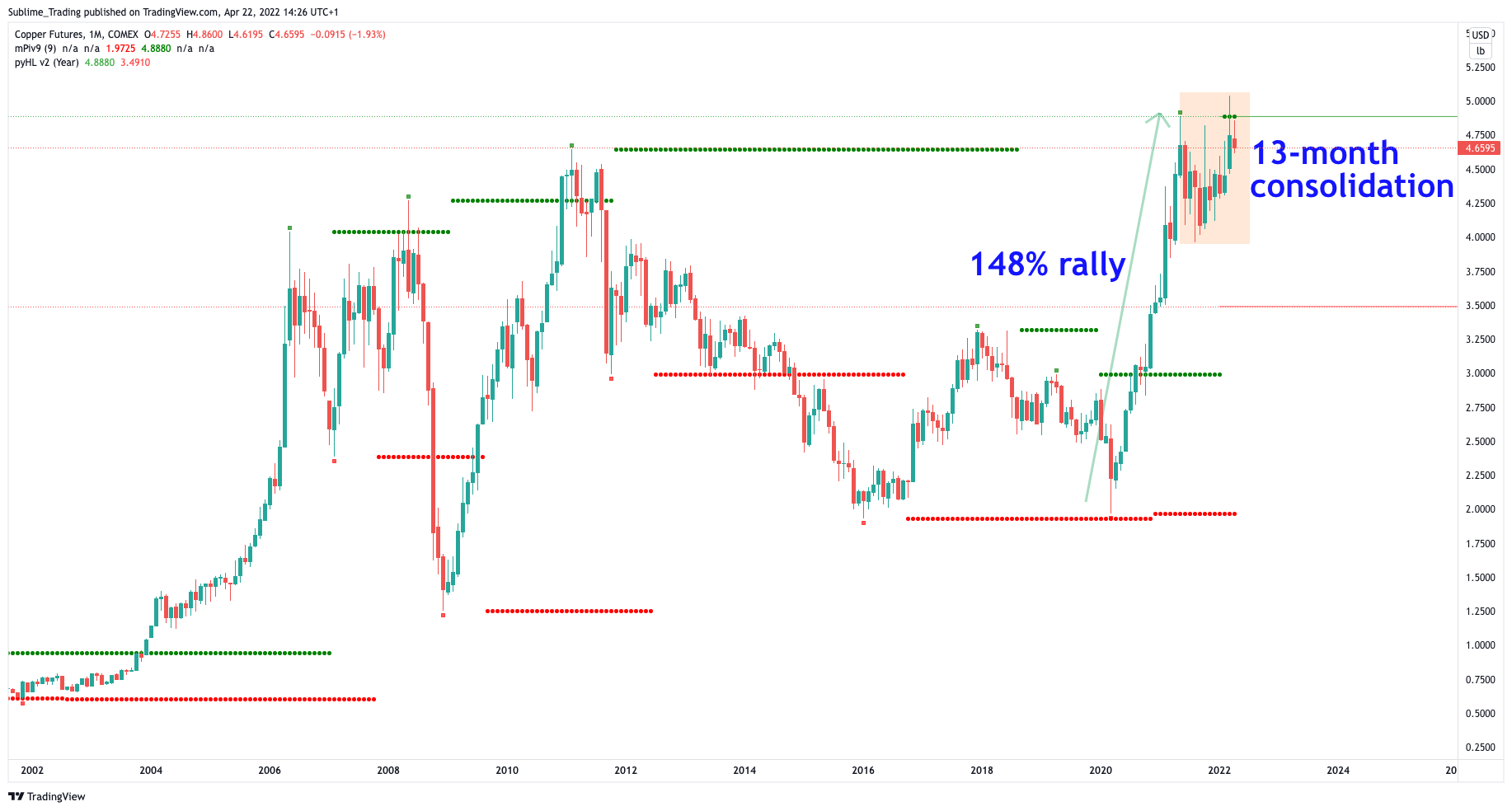
This goes back to my point of not having any attachments as you will either overtrade or under trade, and both will either cause you to underperform in the best case or blow up in the worst case.
Again, it comes down to being a sophisticated investor who can adapt to each market's unique personality.
In part 2, we will examine the stock market and why being a good stock investor gives you an edge that is often overlooked or underappreciated.







